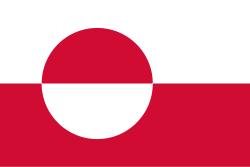Greenland's Melting Ice Reveals Rare Earth Riches Amid Geopolitical Tensions
 Greenland
GreenlandThe complex historical relationship between Greenland and Denmark has recently come under scrutiny, highlighting significant past injustices that still affect the Inuit population today. In the 1950s, dozens of Inuit children were taken from their homes in Greenland to Denmark, where they were forced to assimilate and learn Danish. Many returned unable to communicate with their families due to language loss.
Additionally, between the 1960s and 1970s, thousands of Inuit women and girls were sterilized without consent, a practice aimed at controlling Greenland’s population. This dark chapter, referred to as the "Case of the Spiral," remains a painful memory for many families.
Denmark's Prime Minister Mette Frederiksen publicly apologized for these injustices in 2022, calling the actions "inhumane" and "unjust." Despite Greenland gaining greater autonomy in recent years, many residents continue to grapple with the legacy of colonialism and strive for independence, though financial dependencies on Denmark complicate these aspirations.
The situation is further complicated by recent geopolitical tensions involving the United States, with former President Donald Trump expressing interest in Greenland for strategic reasons. While this prospect is viewed as both a threat and an opportunity by some Greenlanders, the desire for independence is tempered by a reliance on Danish financial support.
Despite its rich resources in minerals and fishing, which comprise the majority of Greenland's economy, the island remains cautious about pursuing immediate independence, as it would require addressing significant logistical and economic challenges.
 Greenland
Greenland Greenland
Greenland Greenland
Greenland